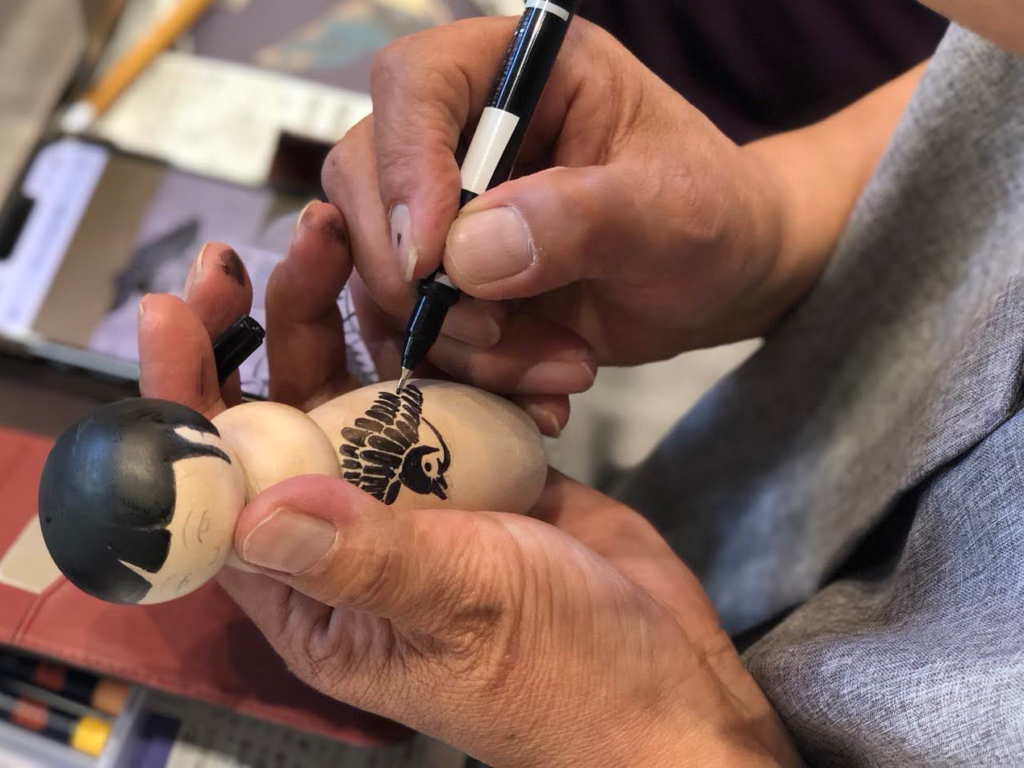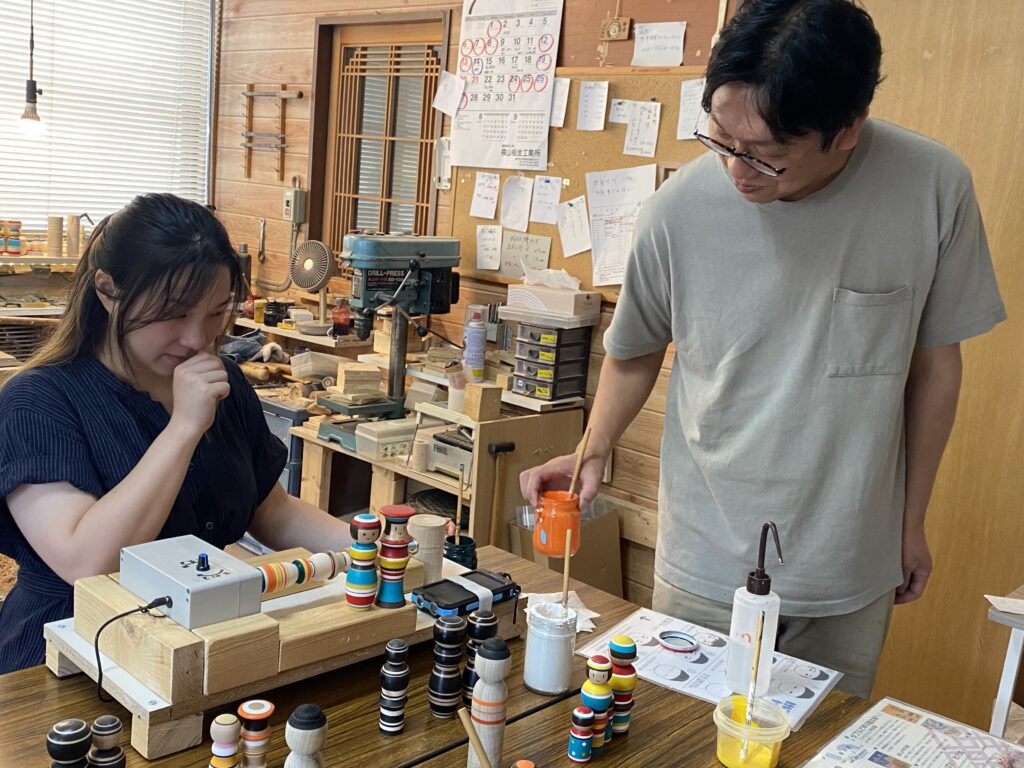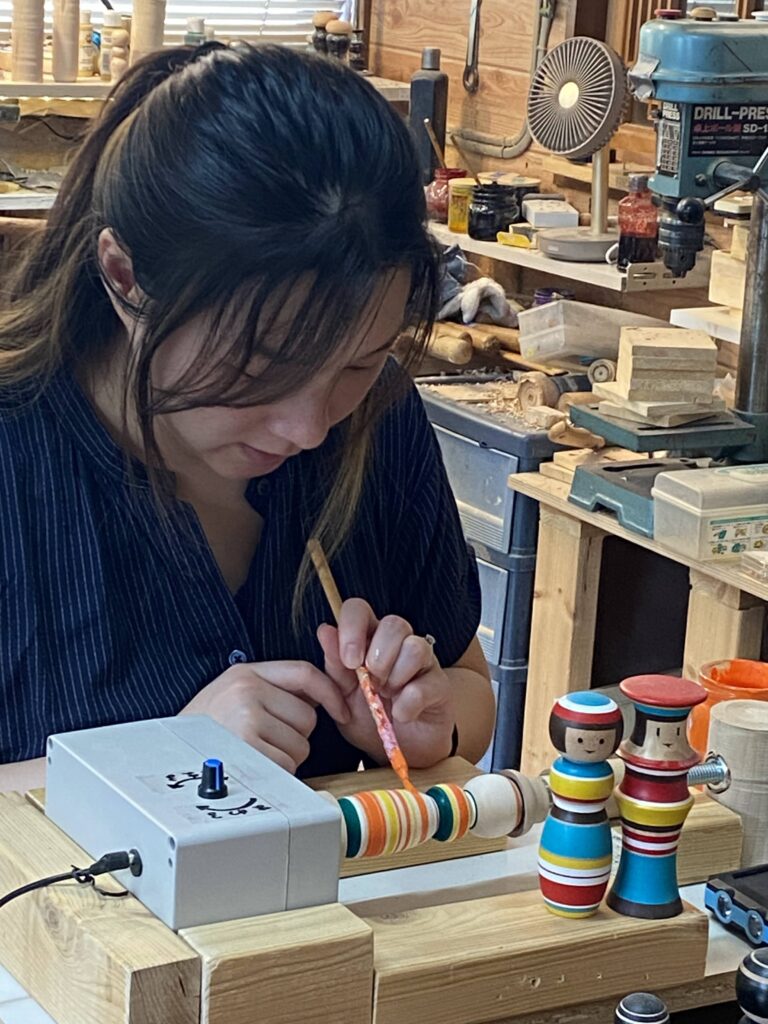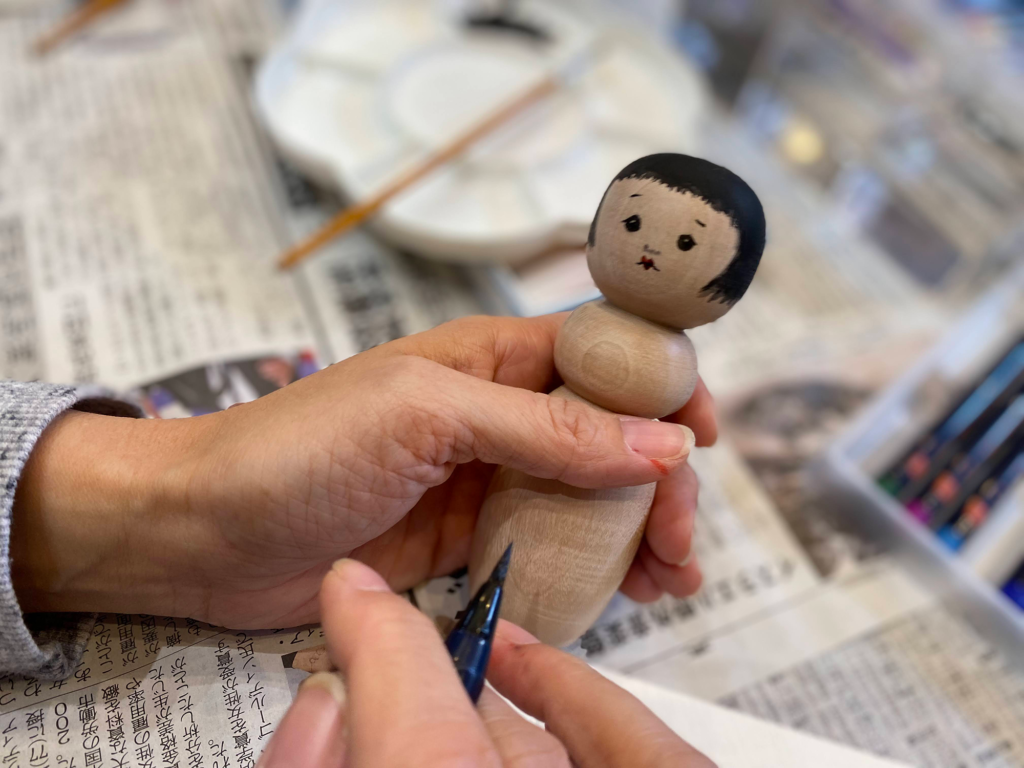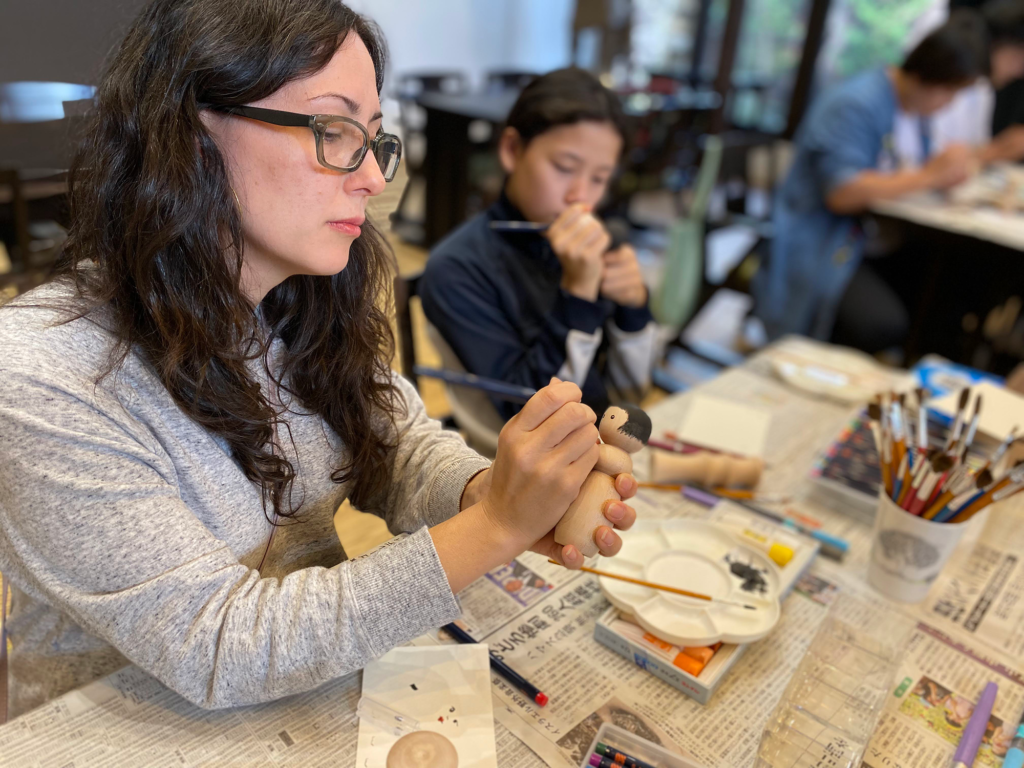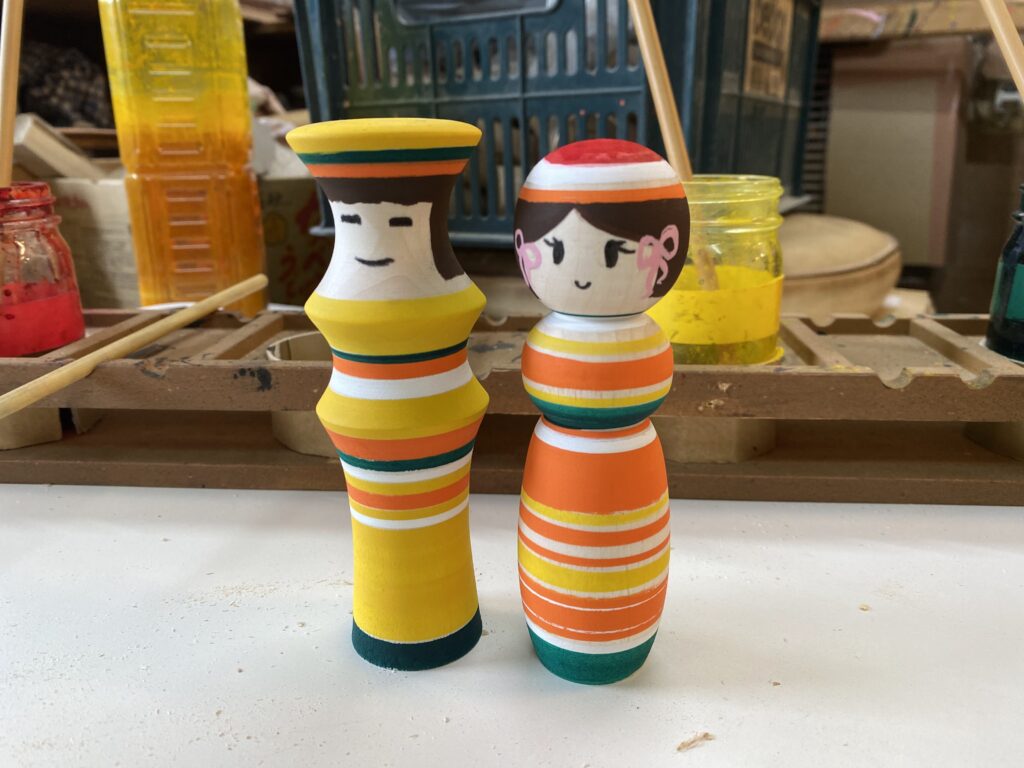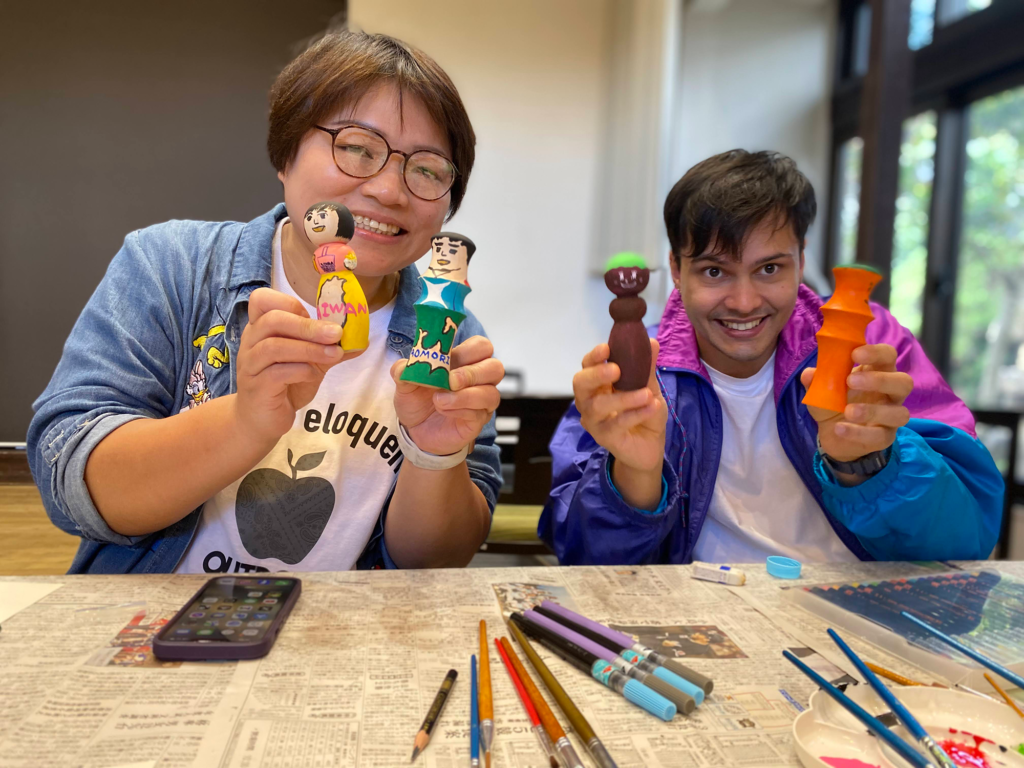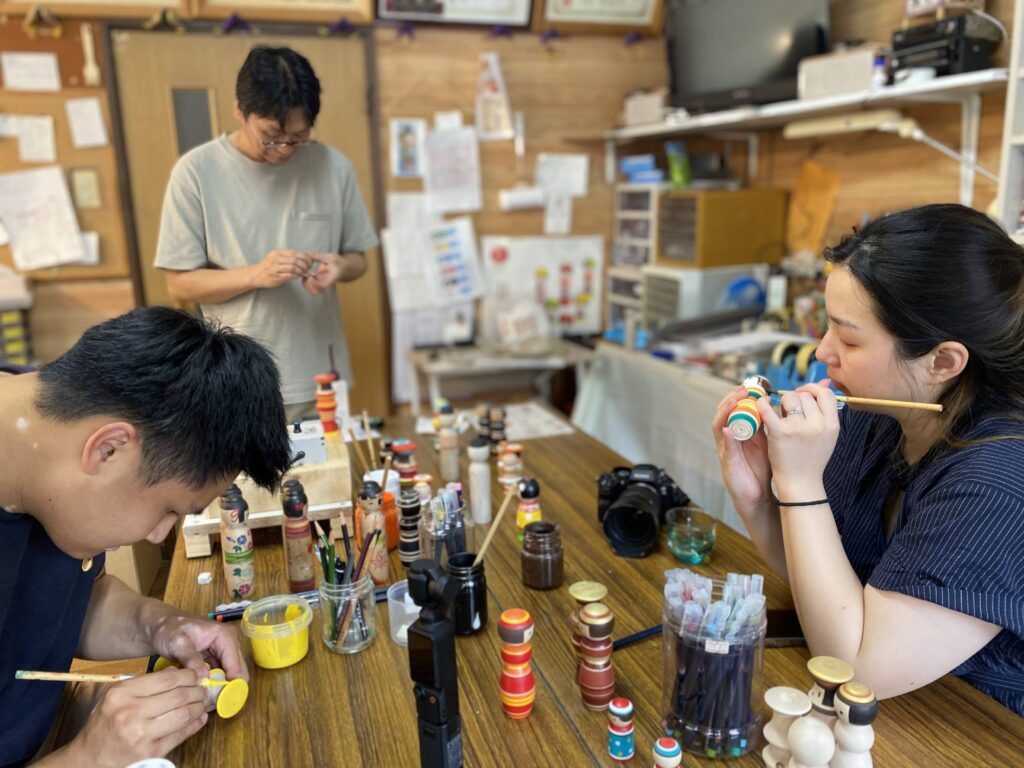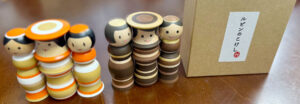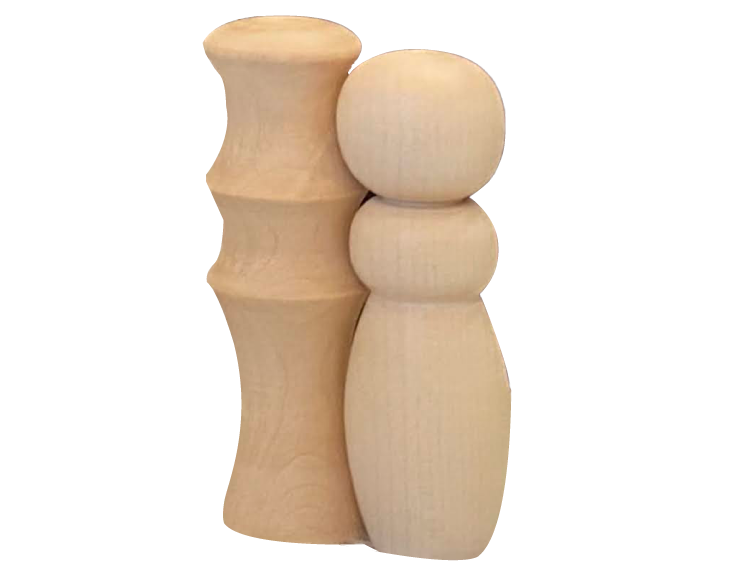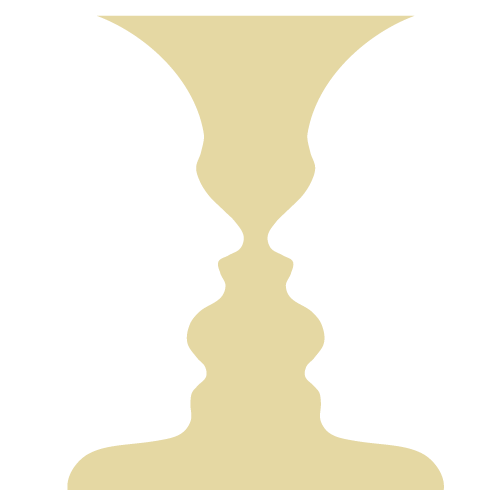Tsugaru Traditional Crafts : Tsugaru Kokeshi Dolls
Rubin’s Kokeshi Doll Painting Experience
Rubin’s Kokeshi was developed through regional collaboration between Matsuya Ginza and Kuroishi City. It was designed by Taku Sato, one of Japan’s leading graphic designers.
ルビンのこけしとは老舗百貨店「松屋銀座」の地域共創と黒石市の取り組みにより開発されたのが日本を代表するグラフィックデザイナーの佐藤卓さんデザインによる「ルビンのこけし」です。こけしとこけしの間にある「隙間」が壺のシルエットが向き合った顔に見える「ルビンの壺」のようなことから、「ルビンのこけし」と名付けられました。
あわせて読みたい
Rubin’s Kokeshi / ルビンのこけし
ルビンのこけし 松屋銀座の地域共創×青森県 黒石市 東京に本社を置く老舗百貨店「松屋銀座」の地域共創と黒石市の取り組みにより開発されたのが日本を代表するグラフィ...
In this tour, you will paint a pair of plain wood kokeshi dolls.It created by the famous Tsugaru kokeshi artists, Abo and his son, to create your own original kokeshi doll.The Rubin’s kokeshi dolls are made by two pairs of kokeshi dolls that fit together to create a perfect overlap.
體驗繪畫於著名的津輕木芥子製作者阿保父子所製作的一對白底【魯賓木芥子】木偶上,來製作屬於自己唯一的木芥子。將一對魯賓木芥子依偎一起,其凹凸部份正好完美重疊。
津軽こけしの名エ、阿保親子が制作した2体組ペアの無垢なこけしに絵付けをし、自分だけのオリジナルこけしを制作するツアーです。ルビンのこけしは2組が寄り添うことで凹凸がピッタリ重なりあいます。
Tour Details
Number of participants 2~10persons ※If you would like more than 10 participants, please contact us. Experience time About 2 hrs Start time 10:00a.m. Reception deadline10 days before the experience day Cancellation Fee 2 days before ~ previous day 50% of the experience fee Experience fee ¥11,000 per adult, ¥1,800 per child Experience location Abo Kokeshiya Parking lot Abo Kokeshiya Contact information KNOCK KNOCK WORLD Staff:NYOKPENG LEE Notes. An apron will be provided, however please wear clothes that you don’t mind getting a little dirty just in case!
実施人数 2人~10人 ※10人以上での参加ご希望の場合にはご相談ください。 時間 作業時間は約90分 開始時間 第2・第4金曜日 午前10時 受付締切 作業日の10日前まで キャンセル料 参加日2日前から前日 50% 料金 お一人様 大人11,000円(ルビンのこけし ペア) 子供1,800円(子供こけし) 体験場所 阿保こけしや 駐車場阿保こけしや前駐車場 お問合せ先 KNOCK KNOCK WORLD 担当:リー 二ヨクペン 注意事項 エプロンをご用意しますが、汚れても良い服装でご来場ください。
Tsugaru Kokeshi and Rubin’s Kokeshi
What is Rubin’s Kokeshi doll?
Rubin’s Kokeshi” is based on the Tsugaru Kokeshi, and was newly designed by graphic designer Taku Sato.The new design for the future Tsugaru Kokeshi doll is Rubin’s Kokeshi doll. Mr. Sato focused on the gap between the kokeshi and the kokeshi.it was named “Rubin`s Kokeshi” after “Rubin’s Vase” which is the silhouette of the vase looks like a face facing each other.
津軽こけしをベースにグラフィックデザイナーの佐藤卓氏が未来の「津軽こけし」として新しくデザインしたものが「ルビンのこけし」です。佐藤氏が着目したのは、こけしとこけしの間にある隙間。壺のシルエットが向き合った顔に見える「ルビンの壺」にちなんで「ルビンのこけし」と名付けられました。
【魯賓木芥子】是平面設計師佐藤卓先生以【津輕木芥子】為基礎而新設計的,是未來【津輕木芥子】模式。佐藤先生關注的是木芥子之間的間隙。有如“魯賓花瓶”的形狀看起來像面對面的臉而被命名為【魯賓木芥子】。
The 55th All- Japan Kokeshi Doll Contest, What is kokeshi doll?
Kokeshi dolls are wheel-thrown wooden dolls that were sold as souvenirs to spa tourists in hot spring resorts in the Tohoku region. There are 12 different types of traditional kokeshi dolls (Tsuchiyu, Yajiro, Togatta, Naruko, Sakunami, Yamagata, Zao, Hijiori, Kijiyama, Nanbu, Tsugaru, and Nakanosawa) in various parts of the Tohoku region.
木芥子娃娃是在陶輪上轉製的木偶,作為紀念品出售給到訪東北地區溫泉鄉的【湯治】遊客。東北地區各地有12種傳統的木芥子娃娃(土湯系/矢次郎系/戶刈田系/鳴子系/作併系/山形系/藏王系/日織系/木地山系/南部系/津輕系/中之澤系)。
こけしとは東北地方の温泉地で湯治客に土産物として売られるようになった轆轤(ろくろ)挽きの木製の人形です。東北地方の各地に12系統(土湯系/弥治郎系/遠刈田系/鳴子系/作並系/山形系/蔵王系/肘折系/木地山系/南部系/津軽系/中ノ沢系)の伝統こけしがあります。
What is Tsugaru Kokeshi Dolls?
Works of Muchihide Abo Tsugaru Kokeshi dolls are made in the Tsugaru region of Aomori, in the Nuruyu hot springs of Kuroishi hot spring village and Owani hot springs.Tsugaru Kokeshi dolls come in a variety of styles and patterns their expressions are very colorful and varied.
津輕木芥子是青森縣津輕地區黑石溫泉鄉的溫湯溫泉及大鱷溫泉的傳承。【津輕木芥子】娃娃有各式各樣的形狀、圖案,其表現方式真是豐富多彩。
青森県の津軽地方、黒石温泉郷の温湯温泉や大鰐温泉で継承されるこけしが津軽こけしです。「津軽こけし」は様々な型や模様があり、その表現様式は実に多彩でバラエティー豊かです。
関連
